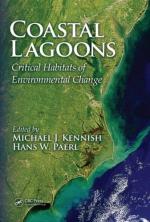|
This section contains 716 words (approx. 3 pages at 300 words per page) |

|
The habitat of a living organism, plant, animal, or microbe, is a place, or a set of environmental conditions, where the organism lives. Net loss of habitat obviously has serious implications for the survival and well-being of dependent organisms, but the nature of remaining habitat is also very important. One factor affecting the quality of surviving habitat is the size of remaining pieces. Larger areas tend to be more desirable for most species. Various influences, often a result of human activity, cause habitat to be divided into smaller and smaller, widely separated pieces. This process of habitat fragmentation has profound implications for species living there.
Each patch created when larger habitat areas are fragmented results in more edge area where patches interface with the surrounding environment. These smaller patches with a relatively large ratio of edge to interior area have some unique characteristics. They are often...
|
This section contains 716 words (approx. 3 pages at 300 words per page) |

|


